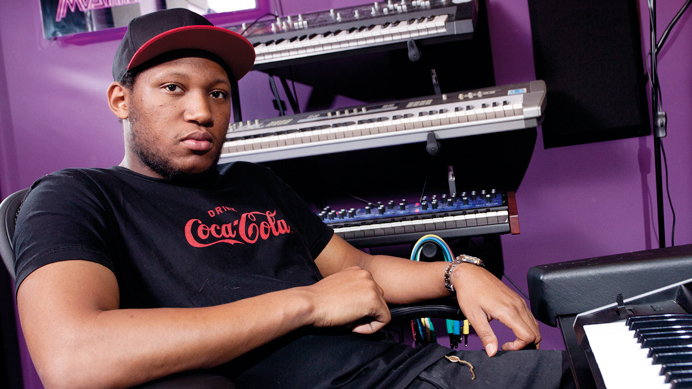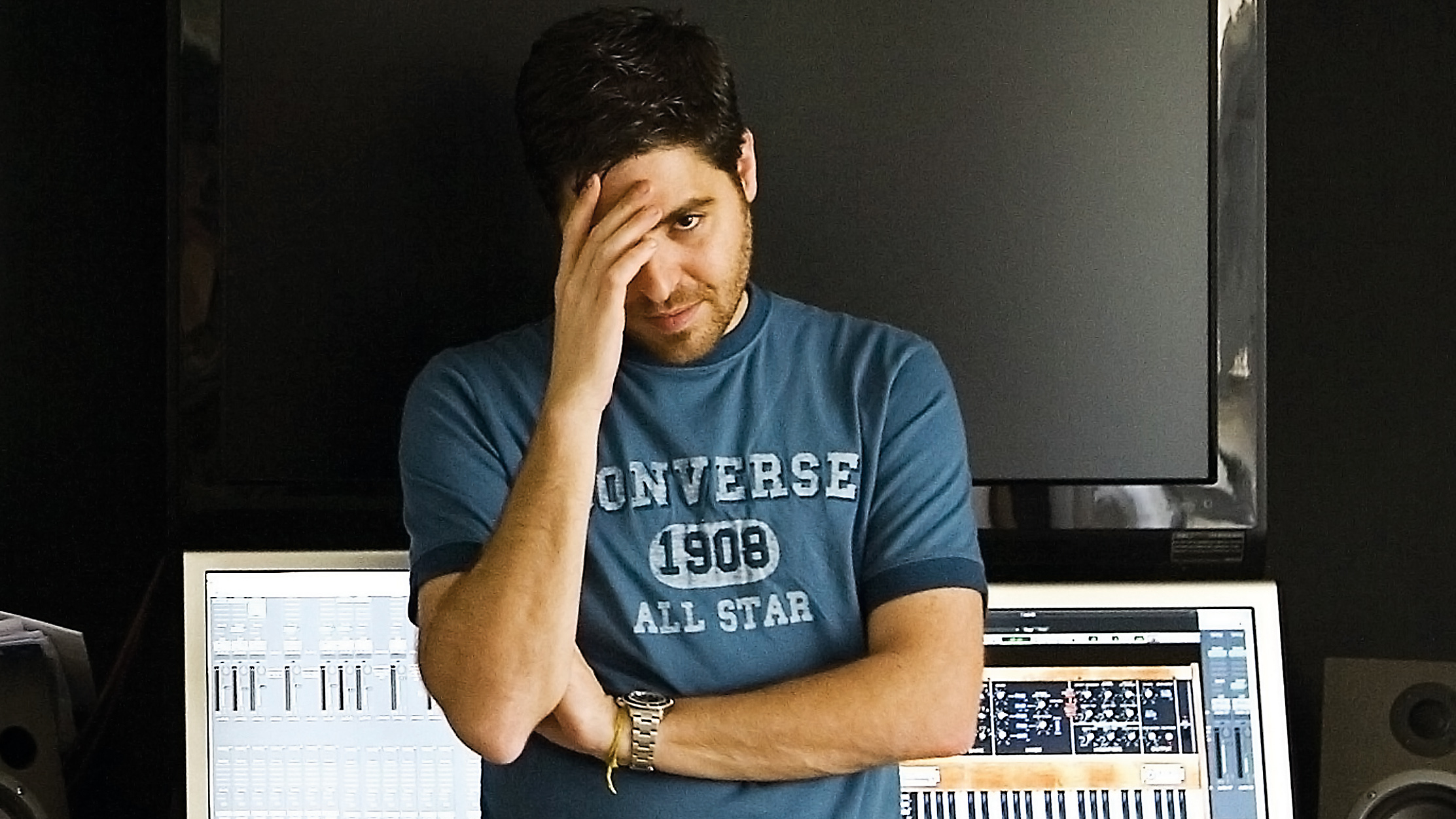20 producer tips
We asked 20 of today's top producers for their hottest music-making tip

1. Jacques Renault
"People seem to go back and forth with what to put on the master and individual tracks. I always tend to use a little compression on everything. It just depends on what sort of effect you're going for. I used to group all my drums together for example, and now each audio track has its own compressor and reverb settings. It makes more sense to me and how each sound will cut in the final mix. With my synths I used to record everything dry and then go back for effects etc. Then I decided that things like turning off the chorus when using my Rolands took away from the warmth of the instrument. It's important for me to have everything as 'live' as possible, I've always considered myself to be a musician and then a producer."
"Group saturation is a nice trick for saturating or distorting a lead sound in context with the bassline, without distorting the bass itself." - Joker
2. Don Rimini
"Audio Damage Sub-Station is a really great delay plug-in. The way that it repeats has a really similar sound to the reverberation of the vintage Roland Space Echo RE-20 which was used in loads of Dub tunes. I mainly use it on rhythmical elements, right before a break, for example. It works really well as an atmospheric layer when there's a lot of feedback."
3. Urulu
"It's weird. No matter how much I spend on plug-ins I always tend to resort to using the free ones the most. One in particular, the Camel Crusher, seems to always find its way onto my drum channels. It's This little free 'colouring' compressor designed by Camel Audio and is great for texturing drums, adding a bit of distortion, or beefing up a low end. Not to mention a 12 year old could use it in a matter of minutes."
4. Russ Chimes
"Go-to compressor: Waves CLA-3A. For the last year or so, this has fast become my favourite and most used compressor, I just love it. Primarily I use it on busses. Drums are usually the first port of call. I usually apply one to the kick and one to a snare or snare buss, then group together all the hi-hat/crash and mid-high frequency percussion tracks together and use the CLA as a sort of glue. It just seems to have the perfect attack/ release times adding thud to kicks and slap to snares in all the right places, while giving the hats and percussion a really subtle sizzle, especially when you play around with the 'Hi-Freq' control. It's also great for applying to synth, lead and pad busses, as the compression it applies is pretty transparent, adding the right amount of body without colouring the sound too much."
5. Lindstrøm
"One of my secret tricks is to use MIDI files, anything from Classical stuff to regular Pop stuff - anything you can find; Bon Jovi, Michael Jackson. When you import those MIDI files to Cubase you get standard GM MIDI synth sounds that are terrible! All the tracks are separate though, so you can access the drums, the guitars, the bass individually. So then I might use the guitar MIDI to trigger a synth, maybe reverse it or move the MIDI notes a 16th bar and stack them to get this kind of phasing effect and really complex rhythms."
6. Joker
"Group saturation is a nice trick for saturating or distorting a lead sound in context with the bassline, without distorting the bass itself. You could also use this technique on a bass sound an octave up to help it sit in the mix. Duplicate your bassline and mute the original. Send your duplicated bassline and the lead to an aux track and add a Saturation plug-in. Drive the input until it's audibly distorting and add an EQ plug post saturation. Cut everything below 500Hz to remove the low and low-mid. Unmute the original bassline and adjust the aux level so that the distorted lead compliments the bass."

7. Mason
"We're a big fan of Permut8, the new plug-in by Sonic Charge. So what does it do? Well, what doesn't it? You can get a huge array of effects ranging from subltle phasing to utter granular madness. Distortion, chorus, delay, pitch shifting, bit-crushing, stutter and loop effects, it's all there. It basically works by slicing up the audio signal either in free-run mode or synced to your project tempo. Then it uses a bunch of formulas to put the slices back together. Slices can range from big to tiny and can be sped up, slowed down or reversed, among other things. This gives very interesting results, and creates totally new ways to change an idea, or force audio into a certain tempo, for example."
Want all the hottest music and gear news, reviews, deals, features and more, direct to your inbox? Sign up here.
8. xKore
"To make my kicks and snares punchy I always use Sonnox Transmod and SPL Transient Designer, with a transient length setting of around 30-50ms. EQing a snare to boost the 'sweet spot' around 200Hz will make it pop nicely too. I usually lightly sidechain them to any interfering elements so the drums come through clearer. Having the transients come through a bit higher than other elements on the master will allow you to squash the waveform slightly so that it gives the effect of the drums briefly pushing other elements out of the way, this makes the drums seem more powerful, snappy and punchy. I often layer a ride onto my snares to give a noisy splash that most snares don't really give."
9. Solomon
"My best trick is the 'Trust Your Ears' trick. What I've found is that by learning the science behind production, I've started to use my ears less. Now, 20 years later and after a lot of learning curves, I have realised that trick is to implement both the science, and the simple method of 'just trusting your ears.' This allows you to focus on the music, the arrangements and sonics, while implementing 'science skills' all at the same time."
10. Audiojack
"The moment my sound will seem loudest is after a period of relative quiet. Shortening the length of the notes slightly can make each sound stand out by putting more space between each one. If you feel it's sounding a little sparse try adding a little light reverb - this done correctly can make the mix feel more live too. When trying to create a moment of impact such as a drop after a break, piling more sounds on top of what's already there can have a negative effect and overcrowd the mix. Instead try gradually reducing what's already there before this point so that it gets gradually quieter before the drop. A simple example is introducing a high-pass filter on the key sounds in a breakdown over 16 bars so that the listener doesn't notice the music getting lighter and then when it drops back to normal the impact will be much more powerful."
11. Steve Lawler
"When writing and producing the first thing I do is build is the drums, starting with a nice kick or maybe two kicks EQ'd to sound right. When I add percussion I always make sure they're not quantised by pulling back the track delay so it brings the percussion slightly off the kick so you get a more live organic sounding drum loop, I do the same with shakers, tambourines - it all makes your drums more organic. When I come to add bass or bottom end to my track, these days I use sub bass more than anything to give the track a heavy dark sound. I don't use any bass sound or module, I simply open up the EXS sampler and play the MIDI controller with no sample going through and get that tone. I then play in my bass melody on the lower keys, and use the Sonalksis TBK filters to get the tone sounding nice and smooth."

12. Dimitri from Paris
"When I mix an old track or something that I want to give a vintage feel to, I find it good to only use the style of effects of that time. For example, if it's a pre-80's flavoured track, I would only use two reverb plug-ins in aux tracks for the whole mix. A room to emulate a virtual studio for light ambiance, and a longer tail reverb you can clearly hear. I also create a very short delay aux that I feed straight into the long verb. This acts as a pre-delay that sounds great on vocals and it allows for two options without adding another plug-in. "I find only using one audible reverb gives a more cohesive mix. For post-80s tracks, I may introduce a third reverb, typically a gated one, and some delay lines, combined with the room and longer verbs. Having been schooled in the old 24-track tape days, when I produce, I try not to go over 30 tracks. I also try to do things in a natural way, like I don't need three hi-hat patterns in my drums or four snare lines etc. Also, not everything needs to be in stereo, especially virtual instruments or sound banks with reverb and FX that don't belong to your track. This takes a lot of clutter out of the track and makes the mixing process easier."
"My tip is to have as little gear and plug-ins etc as possible." - Fake Blood
13. Evil Nine
"Camel Audio's Alchemy is great for manipulating samples and has become our favourite way to create interesting pitched build effects that have texture and movement. With your samples loaded, bring the Stretch parameter down to 0% to 'freeze' the sample and select an upward pitchbend amount of an octave, try any amount you like but an octave is a good place to start. You can now automate the position parameter so it sweeps through the sample and automate the pitchbend to raise the pitch... In Ableton, add a note the length of your required build and create a pitchbend across it via the envelopes box which is accessible by clicking the capital 'E' in the bottom-left corner of the clip display and selecting the pitchbend parameter. Now select the Position parameter in the automation lane - confusingly, it appears as 'S1Start' - and draw an automation sweep across the length of the region from low to high. And you're done. Sidechaining the build and adding LFO pan or delay can sound great."

14. Gui Borrato
"Most people usually solo tracks when they're equalising. I never solo a track when EQing. I'm also a grid freak. When I create something in MIDI I always record and transform it into audio, to have total control of time and so I can EQ things, control dynamics and add some effects."
15. Fake Blood
"My tip is to have as little gear and plug-ins etc as possible. Use a very small amount of stuff and get the most you can out of it. Having a studio like a spaceship and swollen computer isn't going to equal isn't going to equal great tracks. It comes from you not machines, so limitations can work to your advantage. Oh and don't obsess over technique. I've never been taught anything about production or read any tutorials, ever. So ignore this one as well! And then ignore me telling you to ignore it. And then ignore, etc..."
16. Shonky
"I always wanted to use a console but was afraid to make the step. The problem is that mixing a track is usually a more complicated exercise and when you want to make a change It's usually much harder - you need to restart from the beginning. You cannot work on different project and this is not the best option. To solve this problem I decided last year to buy a summing mixer, the Chandler [Limited TG Serie] Mini Rack Mixer. The rack is really simple, you don't have any EQs or fader, just the 16 channels with a pan. I like to explode my song in eight stereo channels and record the master out to a DAW. "The quality of the preamps are incredible and it brings so much space and warmness to your mix. This is most definitely a machine I would recommend."

17. Tomy DeClerque
"It's very important to tune the kick and make it the right length or give it the right decay. It's also important to use the same kick for sidechaining as you're using in your track. This way the envelope of the kick will shape the envelope of the sidechain and blend them nicely. Also, instead of using one sound for the bassline, try splitting it apart and using different sounds for every note in the riff. Then, because each bass note has its own channel, you can treat them separately and apply different EQ, dynamics and effects. Also, stereo delay set at on one channel 33ms and no feedback can work wonders."
18. Vitalic
"I really like the TAL Audio Noisemaker freeware. This software is basically a very convincing Juno emulation but with several types of filters combined with synced LFOs and its assignable envelope make this synth a real bomb. It sounds powerful and precise at the same time. I usually use the 6dB filter with some resonance.Then I assign the envelope to the frequency of the filter and draw a sequence. This makes really aggressive rhythmical lead sounds. I used it a lot inRave Ageas well as during the live shows."
19. Kirk DeGiorgio
"It's a golden age for modular synthesis and particularly the Eurorack format. A great advantage of Eurorack is its diminutive size-to-power ratio which makes it perfect for live performance. Its size - in particular newer modules with the PCBs mounted flat to the back panel - has seen it enter the live arsenal for many electronic artists. Thin and portable 'Skiffs' - cases with a low profile and on-board power solutions - are an excellent way to bring complex, true analogue sounds to live shows."
20. Stacey Pullin
"Analogue equipment is still an important part of my studio, my Tube Tech LCA 2B Compressor is my favourite compressor. I prefer using it on most or all of my low frequency sounds and drums because it saturates all of these things and because it's a tube compressor it enables me to have that fat warm sound with lots of room to spare. My drums sound warm and the ratio and threshold settings are limitless. Sometimes I use the preset settings so I can have an idea on how I want to use it or sometimes I'll start from scratch. On the software tip I love using various Wave plug-ins for my master studio mix. I can run everything through my SSL EQ & compressor plug-ins and you would think that the finished product was produced in a high-end studio, when in fact it was in a basement."
Future Music is the number one magazine for today's producers. Packed with technique and technology we'll help you make great new music. All-access artist interviews, in-depth gear reviews, essential production tutorials and much more. Every marvellous monthly edition features reliable reviews of the latest and greatest hardware and software technology and techniques, unparalleled advice, in-depth interviews, sensational free samples and so much more to improve the experience and outcome of your music-making.
